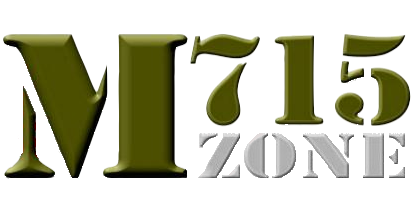Kaiser employee.
Post by jeepistdougiowa on Sept 30, 2006, 11:15am
I stumbled into a guy who worked for Kaiser Jeep from 63 to 72 on the CJ2a discussion board, asked for a little insight into what was happening there at the time, and how well he recalled the M715s....here's what he said.
Doug: As they say, after 60 the mind goes first, or is it second? As a smart -*&% kid just out of high school and saving for collage by drinking 3.2 beer all night, I didn't pay a lot of attention to the vehicles because there were so many everywhere. I worked the M151 line in the Stickney Avenue plant installing grills, as well as unloading trucks, driving forklifts and generally filling in where needed. I transfered to the main plant where they built civilian and military vehicles. I moved stock, installed tires and bumpers on CJ's, Wagoneers and trucks, including the M715's, though the production volume was low at that time as Kaiser was more interested in the Civilian market, which provided a broader product line to attract a new owner (eventually American Motors). Assembly people disliked the Military products because the volume was low and the parts were considered special. I once heard my uncle, who was in charge if all inventory and material handling in the main plant, state that on average a part, from the delivery dock to the assembly line,.could be moved op to 19 times. That sounds impossible to believe, however, the plant was very old, there were Assembly lines in 3 and 4 different floors above ground, and there were 2 and 3 floors of basements, which held inventory and machining operations. Everything was forklifted up large elevators or hung on overhead conveyors. and in a non computer environment, vehicle broadcast tickets (bills of material for each vehicle) often were out of sequence with the parts delivery. If your running 95% civilian product with common parts its OK, however, putting chrome bumpers on a M715 because material handing could not get the parts to you did not go over well with management. The rule of thumb was , always install a parteven if it was the incorrect one. That way you could not be cited for poor work performance, and besides, the repair bay at the end of each line would change out parts overnight. At first I thought this was a union rule, but when I joined management I quickly learned that daily production targets were always to be met, even if a third shift in the repair bay was needed to rework a half a days production. Military vehicles with civilian interiors, civilian tires, on and on. JIT (Just-In-Time) delivery of today just would not have worked in that old factory and system. which at one time was the largest automotive plant in the world.
Regards: Rogan Murdock
I just found it very interesting to actually hear first hand from someone who was there when our trucks were built... figured you guys would too.










